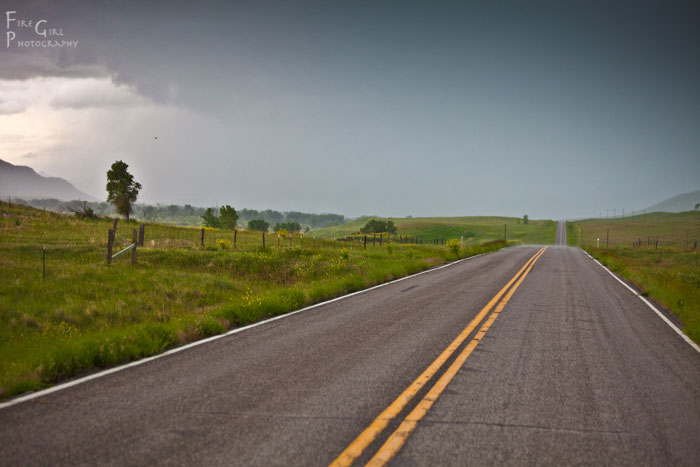
Staying inside during storms is overrated. Cascade, Montana.

Sometimes that late night shuttle translates into something worthwhile. A stormy sunset worth remembering, near Wolf Creek Bridge on the Missouri River.
You wish those few glorious moments could last forever; that somehow you could bracket and frame the juncture, to be lovingly referenced in the future when you need a little boost. I’ve finally grown up enough to recognize these moments (at least some of them) when they come, but have yet to find a way to immortalize them, save for the snap of a shutter.
If I can look at a photograph and feel a swell of emotion—if I can feel a bit of what I felt at that moment—that means I’ve done my job. If I get lost in pixels on a screen, mind running away to the thump-thump of a helicopter or the tap-tap of a large brown nudging at my fly, the photo is worth something. Even if just to me.
It’s a photographer’s responsibility to evoke feeling.
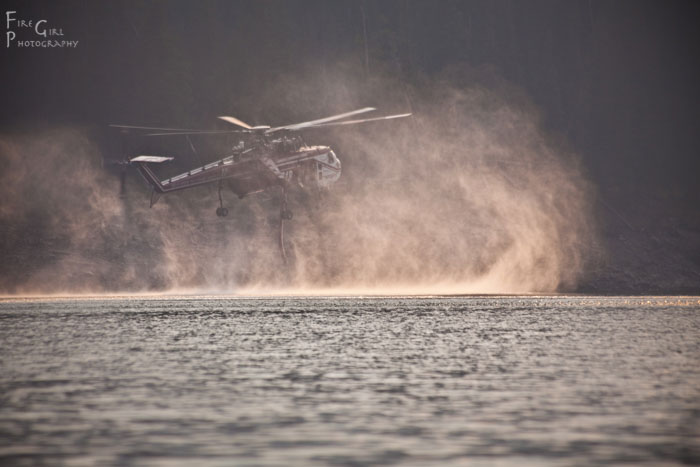
Nothing like a bit of smoke to filter light. Picking up another load of water to fight the Millie Fire, August 2012, Hyalite Lake.
Quality of light is something magical. Wherever you travel, it changes. Common sense tells us that as we move to different spots on the globe, the way the the sunlight filters will change. It’s basic. Often, when describing a place, we discuss it in terms of light. “The sunsets are gorgeous.” “The air is so clear.” “The hills are pink.” Light creates shadows, shadows create shapes. Light creates mood.
For anglers, light gains a different importance. Is it overcast? Is it bright? Do I tie on a light fly or dark fly? Where’s my shadow? I’ve heard fishermen in many locales alternately curse and pray for sunlight. I’ve cruised along cliff walls in a drift boat, closing my eyes in bliss when we crested into warm sunlight and it began to thaw our fingers. And, at times, I’ve muttered curses to the fishing gods to just give me a bit of damn cloud cover.
Light. It’s important.
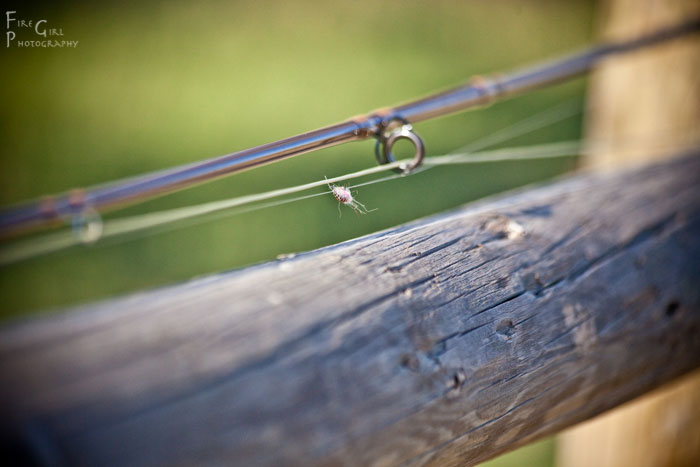
The first of the warm spring light on Montana’s Missouri River. Czech nymphs are still in play, but it’s warm enough to shed the coat before the walk in.
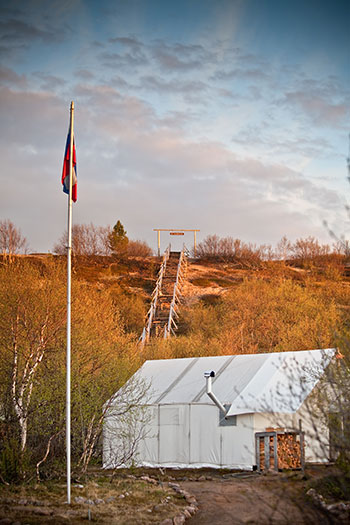
The infamous Ryabaga Camp stairs. Helicopters land at the helo pads on the top of the bluff; the camp rests below alongside the river. Ponoi River, Murmansk Oblast, Russia.
Other than the flushed tundra light north of the Arctic Circle, I’ve rarely seen light that can rival the pink and golden tones of home. Montana is known as Big Sky Country for good reason, and the air there sometimes seems to take on a life of its own, qualities so vibrant they should belong in a painting rather than a sky. On long sessions when I am away—such as this work jaunt to the Northeast—all too often I get lost looking at the sky, wondering why it just doesn’t have the same colors.
Next time you see that red sunrise or one of those sultry sunsets, stop for a minute. Appreciate the quality of the light, the tones the sky and the clouds and the ground take on.
And light, my friends, is so much better when magnified by water.
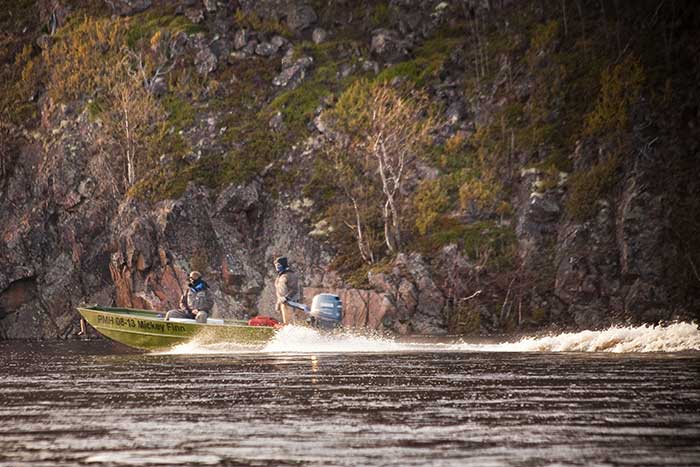
Guides Angus and Barrett take advantage of their hours off (aka the wee hours of the morning)—and the never-setting Arctic sun—to chase Atlantic salmon. Ponoi River, Murmansk Oblast, Russia.

